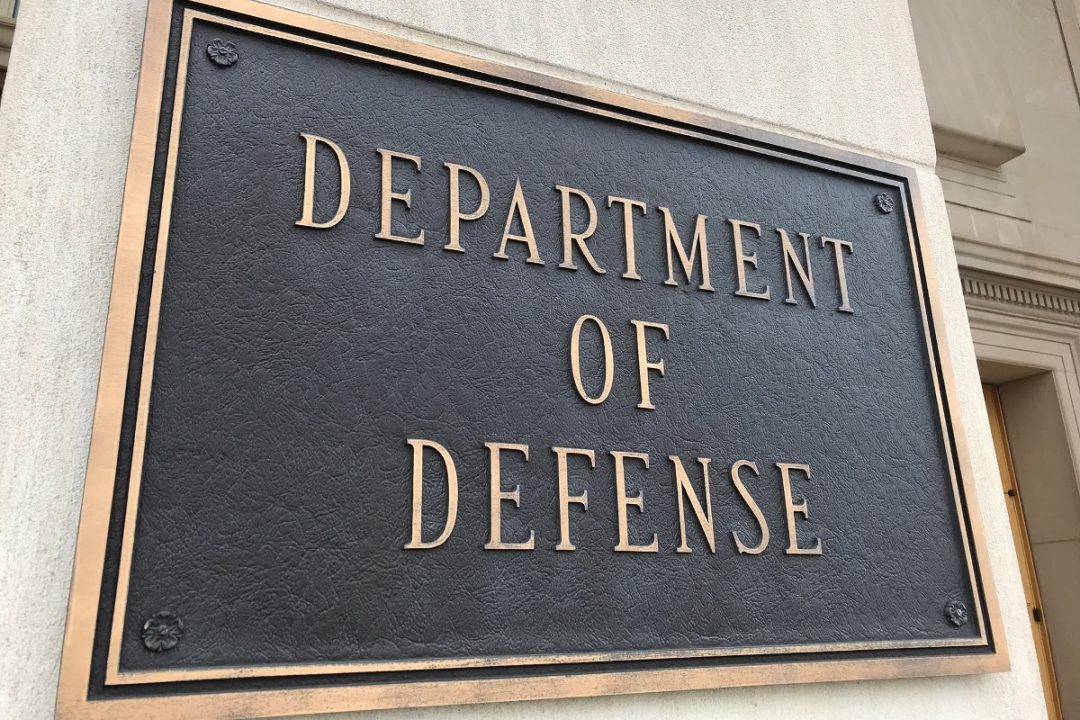
Trump campaigned on an “America First” platform, vowing to end the grip of globalists and special interests on U.S. foreign policy and to put an end to the nation’s “forever wars.” On Monday, he showed — yet again — how far he has moved from that script.
Speaking at the White House, Trump said the Department of Defense would likely be renamed “within a couple of weeks.” He argued that the old title, “Department of War,” had a “better sound.”
“We want defense, but we want offense, too, okay?” said the president.
He later continued:
But I think because, you know, Department of Defense … [when] we won … World War I, World War II, it was called the Department of War. And to me that’s really what it is. Defense is a part of that. But I have a feeling we’re going to be changing.
Indeed, from its creation in 1789 until 1949, the Cabinet office overseeing the Army — and later the Navy and Air Force — was officially called the Department of War. The title carried blunt clarity. Only after World War II, as America assumed its global security role, did Congress fold the services into the new Department of Defense.
Trump stressed, “Defense is too defensive. We want to be defensive, but also offensive — we have to be.”
As for the approval of Congress, Trump expressed confidence:
I’m sure Congress will go along if we need that. I don’t think we even need that. But, if we need that, I’m sure Congress will go along.
The Pentagon echoed the theme, casting the move as a return to tradition.
But it’s hard to imagine George Washington endorsing drone strikes in Somalia, bombing campaigns in Yemen and Iran with no congressional approval, or emergency arms shipments to Israel and Ukraine (more on that later). The contrast between lofty invocations of the Founders and the administration’s sprawling interventions is not just glaring — it is a distortion of the very principles they fought to establish.
Is “Defense” Too “Woke”?
Trump’s Monday announcement was not improvised. The first sign appeared in March, when Trump casually referred to the Pentagon as the “Department of War” on his social media platform. At the time, the remark read like one of many bursts of his bombastic rhetoric.
By late June, however, the message had sharpened. At the conclusion of a NATO meeting in the Netherlands, Trump stood alongside Secretary of State Marco Rubio and Defense Secretary Pete Hegseth. Turning to Hegseth, he called him the “secretary of war.” He then added, “[I]t used to be ‘secretary of war.’ Then we became politically correct.” He teased the renaming again.
That framing reduced a complex history to a culture-war soundbite. As noted earlier, the Department of War existed from the nation’s founding until 1947, when Congress passed the National Security Act to reorganize the military for the Cold War. The renaming reflected the consolidation of the armed forces for global security, not a bow to “political correctness.”
Undoubtedly, the United States should never have taken on that global role in the first place, and Washington would be better off minding its own business abroad. If Trump were reviving the name while steering America back to noninterventionism, the change could be seen as much-needed clarity and constitutionalism. But that is not what is happening.
War in Practice
Trump’s revival of the “Department of War” is not just rhetoric. It comes with action: billions in weapons for allies, airstrikes carried out without congressional approval, and a proposed defense budget racing past $1 trillion.
Israel: Billions in Fast-tracked Arms
In his first months back in office, Trump’s administration pushed through enormous arms transfers to Israel:
- In February, the State Department notified Congress of more than $7 billion in proposed “sales” (paid for by the U.S. taxpayers), including $6.75 billion in bombs and $660 million in Hellfire missiles.
- On February 28, Secretary of State Marco Rubio invoked emergency authority to bypass Congress and approved an additional $3 billion package that included over 35,500 MK 84 bombs and 4,000 Predator warheads.
- On March 1, Rubio again used emergency powers to fast-track nearly $4 billion more in military aid.
In total, almost $12 billion in arms flowed to Israel in the first six weeks of Trump’s second term — delivered not with oversight but through emergency decrees.
Ukraine: Pause, Then Nearly $1 Billion in New Weapons
Trump entered office in 2025 promising to review aid to Ukraine. On March 3, he abruptly suspended all military assistance and intelligence sharing. Within eight days, after talks with Kyiv produced a temporary ceasefire, the aid resumed.
The pause proved short-lived. By summer, arms deliveries had surged again:
- In May, the administration approved a $310 million “sale” of F-16 parts and support.
- In July, another $652 million followed.
The mechanism shifted, too. NATO partners began transferring weapons from their own stockpiles while Washington pledged to replenish them, ensuring faster delivery.
Strikes in the Middle East and Africa
In the spring of 2025, the administration launched Operation Rough Rider, a sustained campaign of strikes on Houthi targets in Yemen. Between March and May, U.S. forces carried out more than 1,000 airstrikes. On April 17, a strike on the Ras Isa oil terminal killed at least 80 people and wounded 171 others. It was one of the deadliest U.S. operations in Yemen to date, and ordered without new congressional authorization.
At the same time, Trump ordered airstrikes on Iran, insisting the country could not be allowed to develop nuclear weapons.
And 2025 U.S. airstrikes in Somalia have doubled compared to 2024, with more than 25 strikes executed by May, according to U.S. Africa Command.
Budget of War
The clearest evidence of this shift lies in the numbers. Trump’s FY 2026 defense request breaks all records, pushing total spending past $1 trillion. The Army, Navy, and Air Force each receive historic increases. Space Force gets a 30-percent jump.
In July, Trump signed legislation that injected another $150 billion into nuclear weapons, missile defense, and integrated strike systems.
The administration is also pushing forward with the “Golden Dome” missile-defense project, a three-year effort priced at $175 billion, with long-term costs projected in the trillions. Critics, such as investigative journalist Derrick Broze, argue, however, that the dome has little to do with defense, and is intended mainly for domestic surveillance.
Last but not least, the U.S. is not stepping away from NATO. Instead, Trump insists on strengthening the alliance with bigger contributions, backing the new target of five percent of gross domestic product in defense spending for all members.
To sum up, nothing in Trump’s second term so far points to a return to the limited republic the Founders envisioned. Instead, he leans on a “besieged castle” narrative, warning of “too many bad players” rather than seeking normalization with rivals. In doing so, he distorts the intent of the Founders, who created a Department of War to defend the young republic, not to underwrite permanent global entanglements. The message now is unmistakable: not restraint, but a posture of endless readiness for conflict. With the announced rebirth of a Department of War, U.S. militarism is no longer disguised — it is declared.





